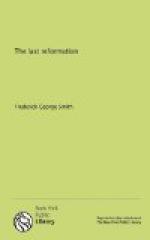The real occasion for the outbreak of the Reformation was the papal traffic in indulgences. Leo X had great need of money for the building of St. Peter’s, and other undertakings, and in order to fill the coffers of the church he had recourse to the sale of indulgences. The power of dispensing these indulgences in Saxony in Germany was committed to a Dominican friar named Tetzel, a fanatical enthusiast who entertained the most extravagant notions concerning their efficacy in forgiving not only the sins already committed but even those which were contemplated. Luther’s soul burned with righteous indignation. Of what use was the doctrine that forgiveness of sin came by the death of Christ on the cross if any sinner could obtain it from an emissary of the pope for a pecuniary consideration. Luther felt that this infamous traffic was making the Word of God of none effect. He therefore drew up ninety-five theses against the doctrine of indulgences and nailed them on the church-door at Wittenberg. The printing-press scattered copies of these theses everywhere, and soon the continent of Europe was in a blaze of controversy. Such, in short, was the beginning of the Reformation and some of the causes leading thereto.
[Sidenote: Gospel standard sought]
The key-note of the reformers was, therefore, the gospel. The views of the reformers with respect to truth were not altogether harmonious, and it is evident that some of them had much clearer conception of the gospel than had others. Nevertheless, their primary purpose was the same. They were gradually forced to the conviction that Rome had made the faith of God of none effect by her traditions, errors, and superstitions, so much so as to make it practically unknown. It was the purpose of these heroic preachers to bring out these long-obscured truths and thus make them effectual in the saving of men. The main doctrine around which the Reformation centered was justification by faith independent of human mediation.
So far as the Reformation restored to the world right doctrine, it tended to correct the evils of that phase of the apostasy which we have characterized as the corruption of evangelical faith. But it did not remove that other evil characteristic of the apostasy, the parent of nearly all other evils—human ecclesiasticism. Viewed from one angle, that power appears to have been modified; but from another point of view, we can see that what was formerly an imperial system of centralized ecclesiastical control simply ended now in nationally centralized systems perpetuating the same principles. Thus, from the centralized dominion of the papal hierarchy there sprang the national, or state, churches in Switzerland, Germany, Holland, England, Sweden, and Scotland.
[Sidenote: Lingering influence of Rome]




